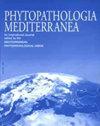Detection of post-harvest pathogens by loop-mediated isothermal amplification: a review
IF 1.9
3区 农林科学
Q2 AGRONOMY
引用次数: 0
Abstract
Postharvest losses, which occur between harvest and consumption of agricultural commodities, are major causes of food waste. Minimizing food loss helps provide nutritious food for animals and humans, and alleviate adverse environmental effects on food production. These losses are often related to the presence of postharvest pathogens, including fungi and bacteria, which typically start by infecting crops in the field as well as during postharvest chain. Control of these pathogens relies on development of tools that ensure their early and accurate detection. Among these is loop-mediated isothermal amplification (LAMP), a molecular method for pathogen detection. LAMP characteristics of rapidity, specificity and simplicity have encouraged development of a number of LAMP assays for detection of postharvest pathogens. Each LAMP assay allows to detect a specific genetic region of the target microorganism, which can be directly related to mycotoxin production, fungicide resistance and phytotoxicity. The LAMP amplicons are rapidly visualized, either at a specific timepoint, or in real-time by taking measurements throughout reaction, thereby necessitating less sophisticated facilities than those needed for PCR assays. In addition, many studies have developed simple protocols for the direct detection of pathogens on fresh produce. This paper explains the LAMP reaction, and its importance for postharvest detection of fungi and bacteria. Previous studies that have developed LAMP assays are also discussed.环介导等温扩增检测采后病原体的研究进展
收获后损失发生在农产品收获和消费之间,是造成粮食浪费的主要原因。最大限度地减少粮食损失有助于为动物和人类提供营养食品,并减轻对粮食生产的不利环境影响。这些损失通常与采后病原体的存在有关,包括真菌和细菌,这些病原体通常是通过感染田地里的作物以及采后链开始的。对这些病原体的控制依赖于确保其早期准确检测的工具的开发。其中包括环介导的等温扩增(LAMP),这是一种用于病原体检测的分子方法。LAMP具有快速、特异性和简单性的特点,促进了许多用于检测采后病原体的LAMP检测方法的发展。每种LAMP分析都可以检测目标微生物的特定遗传区域,该区域可能与真菌毒素的产生、杀菌剂耐药性和植物毒性直接相关。LAMP扩增子可以在特定时间点快速可视化,也可以通过在整个反应过程中进行测量实时可视化,从而需要比PCR分析所需的设施更不复杂的设施。此外,许多研究已经制定了直接检测新鲜农产品病原体的简单方案。本文阐述了LAMP反应及其在采后真菌和细菌检测中的重要性。还讨论了先前开发LAMP测定法的研究。
本文章由计算机程序翻译,如有差异,请以英文原文为准。
求助全文
约1分钟内获得全文
求助全文
来源期刊

Phytopathologia Mediterranea
生物-植物科学
CiteScore
4.40
自引率
8.30%
发文量
28
审稿时长
6-12 weeks
期刊介绍:
Phytopathologia Mediterranea is an international journal edited by the Mediterranean Phytopathological Union. The journal’s mission is the promotion of plant health for Mediterranean crops, climate and regions, safe food production, and the transfer of new knowledge on plant diseases and their sustainable management.
The journal deals with all areas of plant pathology, including etiology, epidemiology, disease control, biochemical and physiological aspects, and utilization of molecular technologies. All types of plant pathogens are covered, including fungi, oomycetes, nematodes, protozoa, bacteria, phytoplasmas, viruses, and viroids. The journal also gives a special attention to research on mycotoxins, biological and integrated management of plant diseases, and the use of natural substances in disease and weed control. The journal focuses on pathology of Mediterranean crops grown throughout the world.
The Editorial Board of Phytopathologia Mediterranea has recently been reorganised, under two Editors-in-Chief and with an increased number of editors.
 求助内容:
求助内容: 应助结果提醒方式:
应助结果提醒方式:


